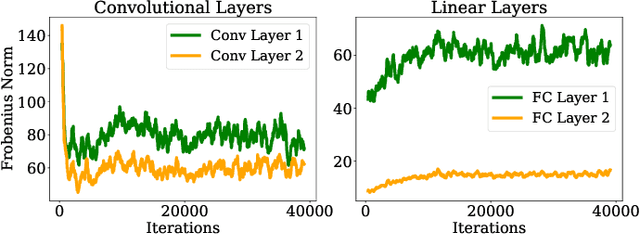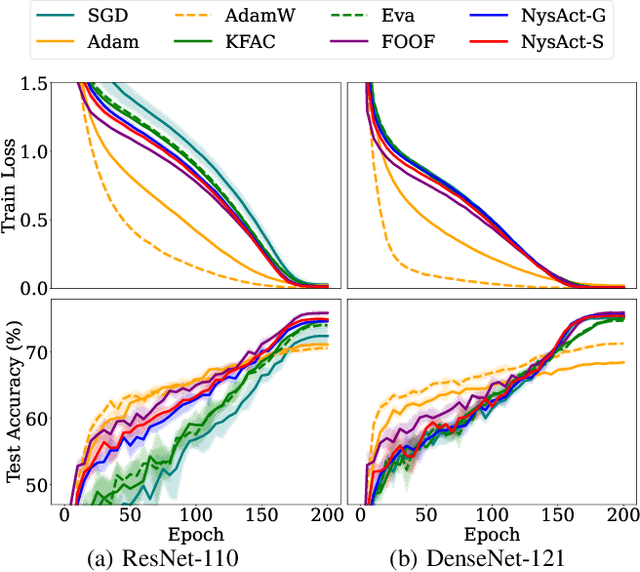Jaewoo Lee
Geometric Backstepping Control of Omnidirectional Tiltrotors Incorporating Servo-Rotor Dynamics for Robustness against Sudden Disturbances
Oct 02, 2025Abstract:This work presents a geometric backstepping controller for a variable-tilt omnidirectional multirotor that explicitly accounts for both servo and rotor dynamics. Considering actuator dynamics is essential for more effective and reliable operation, particularly during aggressive flight maneuvers or recovery from sudden disturbances. While prior studies have investigated actuator-aware control for conventional and fixed-tilt multirotors, these approaches rely on linear relationships between actuator input and wrench, which cannot capture the nonlinearities induced by variable tilt angles. In this work, we exploit the cascade structure between the rigid-body dynamics of the multirotor and its nonlinear actuator dynamics to design the proposed backstepping controller and establish exponential stability of the overall system. Furthermore, we reveal parametric uncertainty in the actuator model through experiments, and we demonstrate that the proposed controller remains robust against such uncertainty. The controller was compared against a baseline that does not account for actuator dynamics across three experimental scenarios: fast translational tracking, rapid rotational tracking, and recovery from sudden disturbance. The proposed method consistently achieved better tracking performance, and notably, while the baseline diverged and crashed during the fastest translational trajectory tracking and the recovery experiment, the proposed controller maintained stability and successfully completed the tasks, thereby demonstrating its effectiveness.
Diffusion Alignment as Variational Expectation-Maximization
Oct 01, 2025Abstract:Diffusion alignment aims to optimize diffusion models for the downstream objective. While existing methods based on reinforcement learning or direct backpropagation achieve considerable success in maximizing rewards, they often suffer from reward over-optimization and mode collapse. We introduce Diffusion Alignment as Variational Expectation-Maximization (DAV), a framework that formulates diffusion alignment as an iterative process alternating between two complementary phases: the E-step and the M-step. In the E-step, we employ test-time search to generate diverse and reward-aligned samples. In the M-step, we refine the diffusion model using samples discovered by the E-step. We demonstrate that DAV can optimize reward while preserving diversity for both continuous and discrete tasks: text-to-image synthesis and DNA sequence design.
NysAct: A Scalable Preconditioned Gradient Descent using Nystrom Approximation
Jun 10, 2025



Abstract:Adaptive gradient methods are computationally efficient and converge quickly, but they often suffer from poor generalization. In contrast, second-order methods enhance convergence and generalization but typically incur high computational and memory costs. In this work, we introduce NysAct, a scalable first-order gradient preconditioning method that strikes a balance between state-of-the-art first-order and second-order optimization methods. NysAct leverages an eigenvalue-shifted Nystrom method to approximate the activation covariance matrix, which is used as a preconditioning matrix, significantly reducing time and memory complexities with minimal impact on test accuracy. Our experiments show that NysAct not only achieves improved test accuracy compared to both first-order and second-order methods but also demands considerably less computational resources than existing second-order methods. Code is available at https://github.com/hseung88/nysact.
An Adaptive Method Stabilizing Activations for Enhanced Generalization
Jun 10, 2025Abstract:We introduce AdaAct, a novel optimization algorithm that adjusts learning rates according to activation variance. Our method enhances the stability of neuron outputs by incorporating neuron-wise adaptivity during the training process, which subsequently leads to better generalization -- a complementary approach to conventional activation regularization methods. Experimental results demonstrate AdaAct's competitive performance across standard image classification benchmarks. We evaluate AdaAct on CIFAR and ImageNet, comparing it with other state-of-the-art methods. Importantly, AdaAct effectively bridges the gap between the convergence speed of Adam and the strong generalization capabilities of SGD, all while maintaining competitive execution times. Code is available at https://github.com/hseung88/adaact.
MAC: An Efficient Gradient Preconditioning using Mean Activation Approximated Curvature
Jun 10, 2025Abstract:Second-order optimization methods for training neural networks, such as KFAC, exhibit superior convergence by utilizing curvature information of loss landscape. However, it comes at the expense of high computational burden. In this work, we analyze the two components that constitute the layer-wise Fisher information matrix (FIM) used in KFAC: the Kronecker factors related to activations and pre-activation gradients. Based on empirical observations on their eigenspectra, we propose efficient approximations for them, resulting in a computationally efficient optimization method called MAC. To the best of our knowledge, MAC is the first algorithm to apply the Kronecker factorization to the FIM of attention layers used in transformers and explicitly integrate attention scores into the preconditioning. We also study the convergence property of MAC on nonlinear neural networks and provide two conditions under which it converges to global minima. Our extensive evaluations on various network architectures and datasets show that the proposed method outperforms KFAC and other state-of-the-art methods in terms of accuracy, end-to-end training time, and memory usage. Code is available at https://github.com/hseung88/mac.
TAMP: Token-Adaptive Layerwise Pruning in Multimodal Large Language Models
Apr 15, 2025Abstract:Multimodal Large Language Models (MLLMs) have shown remarkable versatility in understanding diverse multimodal data and tasks. However, these capabilities come with an increased model scale. While post-training pruning reduces model size in unimodal models, its application to MLLMs often yields limited success. Our analysis discovers that conventional methods fail to account for the unique token attributes across layers and modalities inherent to MLLMs. Inspired by this observation, we propose TAMP, a simple yet effective pruning framework tailored for MLLMs, featuring two key components: (1) Diversity-Aware Sparsity, which adjusts sparsity ratio per layer based on diversities among multimodal output tokens, preserving more parameters in high-diversity layers; and (2) Adaptive Multimodal Input Activation, which identifies representative multimodal input tokens using attention scores to guide unstructured weight pruning. We validate our method on two state-of-the-art MLLMs: LLaVA-NeXT, designed for vision-language tasks, and VideoLLaMA2, capable of processing audio, visual, and language modalities. Empirical experiments across various multimodal evaluation benchmarks demonstrate that each component of our approach substantially outperforms existing pruning techniques.
Posterior Inference with Diffusion Models for High-dimensional Black-box Optimization
Feb 24, 2025Abstract:Optimizing high-dimensional and complex black-box functions is crucial in numerous scientific applications. While Bayesian optimization (BO) is a powerful method for sample-efficient optimization, it struggles with the curse of dimensionality and scaling to thousands of evaluations. Recently, leveraging generative models to solve black-box optimization problems has emerged as a promising framework. However, those methods often underperform compared to BO methods due to limited expressivity and difficulty of uncertainty estimation in high-dimensional spaces. To overcome these issues, we introduce \textbf{DiBO}, a novel framework for solving high-dimensional black-box optimization problems. Our method iterates two stages. First, we train a diffusion model to capture the data distribution and an ensemble of proxies to predict function values with uncertainty quantification. Second, we cast the candidate selection as a posterior inference problem to balance exploration and exploitation in high-dimensional spaces. Concretely, we fine-tune diffusion models to amortize posterior inference. Extensive experiments demonstrate that our method outperforms state-of-the-art baselines across various synthetic and real-world black-box optimization tasks. Our code is publicly available \href{https://github.com/umkiyoung/DiBO}{here}
Unified Multi-Modal Interleaved Document Representation for Information Retrieval
Oct 03, 2024



Abstract:Information Retrieval (IR) methods aim to identify relevant documents in response to a given query, which have gained remarkable attention due to their successful application in various natural language tasks. However, existing approaches typically consider only the textual information within the documents, which overlooks the fact that documents can contain multiple modalities, including texts, images, and tables. Further, they often segment each long document into multiple discrete passages for embedding, preventing them from capturing the overall document context and interactions between paragraphs. We argue that these two limitations lead to suboptimal document representations for retrieval. In this work, to address them, we aim to produce more comprehensive and nuanced document representations by holistically embedding documents interleaved with different modalities. Specifically, we achieve this by leveraging the capability of recent vision-language models that enable the processing and integration of text, images, and tables into a unified format and representation. Moreover, to mitigate the information loss from segmenting documents into passages, instead of representing and retrieving passages individually, we further merge the representations of segmented passages into one single document representation, while we additionally introduce a reranking strategy to decouple and identify the relevant passage within the document if necessary. Then, through extensive experiments on diverse information retrieval scenarios considering both the textual and multimodal queries, we show that our approach substantially outperforms relevant baselines, thanks to the consideration of the multimodal information interleaved within the documents in a unified way.
Guided Trajectory Generation with Diffusion Models for Offline Model-based Optimization
Jun 29, 2024Abstract:Optimizing complex and high-dimensional black-box functions is ubiquitous in science and engineering fields. Unfortunately, the online evaluation of these functions is restricted due to time and safety constraints in most cases. In offline model-based optimization (MBO), we aim to find a design that maximizes the target function using only a pre-existing offline dataset. While prior methods consider forward or inverse approaches to address the problem, these approaches are limited by conservatism and the difficulty of learning highly multi-modal mappings. Recently, there has been an emerging paradigm of learning to improve solutions with synthetic trajectories constructed from the offline dataset. In this paper, we introduce a novel conditional generative modeling approach to produce trajectories toward high-scoring regions. First, we construct synthetic trajectories toward high-scoring regions using the dataset while injecting locality bias for consistent improvement directions. Then, we train a conditional diffusion model to generate trajectories conditioned on their scores. Lastly, we sample multiple trajectories from the trained model with guidance to explore high-scoring regions beyond the dataset and select high-fidelity designs among generated trajectories with the proxy function. Extensive experiment results demonstrate that our method outperforms competitive baselines on Design-Bench and its practical variants. The code is publicly available in \texttt{https://github.com/dbsxodud-11/GTG}.
Concept-skill Transferability-based Data Selection for Large Vision-Language Models
Jun 16, 2024Abstract:Instruction tuning, or supervised finetuning on extensive task-specific data, is necessary for Large Vision-Language Models (LVLMs) to generalize well across a broad range of vision-language (VL) tasks. However, training on large VL datasets can become prohibitively expensive. In this work, we introduce COINCIDE, an effective and scalable data selection technique that uses a small model as a reference model to select visual instruction tuning data for efficient finetuning of a target LVLM, focusing on diversity and transferability. Specifically, we cluster the training data using internal activations from a small model, which identifies VL concept-skill compositions needed by a target LVLM. We then sample data from these diverse clusters by considering their density and transferability, or the ability to transfer well to other concept-skill compositions. This approach ensures the diversity of these compositions, which is vital for LVLM generalization. Extensive experiments demonstrate that COINCIDE achieves superior performance and data selection efficiency against 8 strong baselines on two distinct datasets: LLaVA-1.5 and Vision-Flan. Using only 20% of the LLaVA-1.5 dataset, COINCIDE achieves performance comparable to the LVLM finetuned on the whole dataset, with 70% reduction of the wall-clock running time. On the Vision-Flan dataset, our method achieves superior results with only 16.7% of the training data.
 Add to Chrome
Add to Chrome Add to Firefox
Add to Firefox Add to Edge
Add to Edge